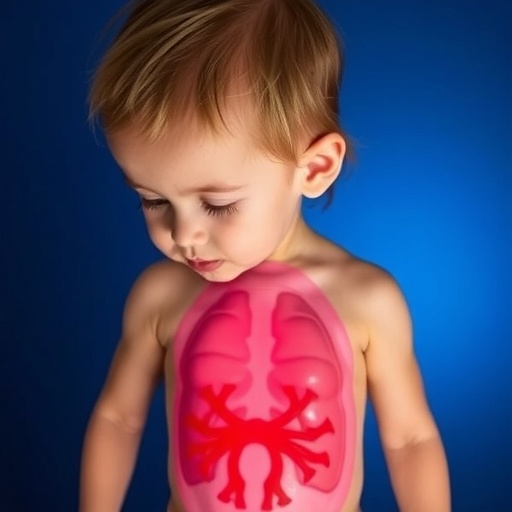Pediatric rhabdomyolysis is a critical condition characterized by the breakdown of skeletal muscle, leading to the release of myoglobin, creatine kinase, and other intracellular components into the bloodstream. This phenomenon not only poses significant health risks but also poses a unique challenge for pediatric clinicians. Recent research by Zaki, Elmelliti, and Malik provides an extensive examination of the etiologies, management, and outcomes of pediatric rhabdomyolysis, presenting an invaluable contribution to our understanding of this complex disorder.
The systematic review is steeped in the necessity of prompting awareness among healthcare professionals regarding the multifaceted nature of rhabdomyolysis. The condition can arise from various etiologies, including trauma, strenuous exercise, infections, and metabolic disorders. Specifying the underlying cause is imperative for implementing the appropriate management strategies. The authors meticulously curate and analyze a comprehensive range of literature, shedding light on the diverse clinical presentations of rhabdomyolysis in pediatric patients.
One of the primary contributors to pediatric rhabdomyolysis is the incidence of viral infections. Among these, certain viruses, including influenza and adenovirus, have been associated with myositis, leading to muscle breakdown. The review emphasizes the importance of recognizing such viral etiologies early to avoid potential complications. For instance, pediatric patients presenting with muscular pain, weakness, and elevated serum creatine kinase levels should be evaluated for recent viral infections to initiate timely treatment.
Acute symptoms of rhabdomyolysis often manifest as severe muscular pain, swelling, and weakness. Additionally, laboratory findings typically reveal elevated levels of creatine kinase, myoglobinuria, and electrolyte imbalances. As pediatric patients may not always articulate their symptoms effectively, vigilance on the part of healthcare providers is essential. The systematic review underscores the necessity for meticulous clinical evaluations to aid in the differential diagnosis and effectively mitigate the risks of acute kidney injury and other complications associated with delayed recognition.
The management of pediatric rhabdomyolysis necessitates a multifaceted approach involving hydration, correction of electrolyte imbalances, and addressing the underlying cause. The review highlights the paramount importance of early aggressive hydration as a cornerstone of treatment. Intravenous fluids are critical in diluting nephrotoxins and supporting renal function; thus, establishing adequate volume resuscitation is essential for optimizing patient outcomes. Additionally, monitoring renal function and electrolytes throughout the treatment process is crucial in preventing long-term complications.
In many cases, complications arise when rhabdomyolysis is mismanaged or misdiagnosed, leading to acute kidney injury. As emphasized in the systematic review, clinical vigilance should extend beyond the immediate treatment of acute symptoms. Ongoing assessments are necessary to ensure that patients do not develop secondary complications, such as compartment syndrome or persistent renal impairment. The authors advocate for standardized protocols in evaluating and managing pediatric patients presenting with this condition to ensure systematic care and uphold patient safety.
Institutional protocols play a pivotal role in the management of pediatric rhabdomyolysis. Healthcare establishments must prioritize educating clinical staff about the signs and symptoms associated with rhabdomyolysis, alongside the appropriate management techniques. By developing comprehensive training programs, hospitals can ensure that medical professionals can respond effectively and promptly when faced with such cases. Developing clinical pathways that encompass identification, diagnosis, treatment, and follow-up can significantly improve patient outcomes and mitigate risks.
One of the key findings of the meta-analysis is the diverse outcomes among patients diagnosed with pediatric rhabdomyolysis. While many children recover fully without significant long-term consequences, some may experience residual effects affecting their quality of life. The review discusses various factors influencing outcomes, with an emphasis on the time between symptom onset and treatment initiation being a critical element. Consequently, timely identification and management can significantly alter the prognosis for affected children.
The increased awareness surrounding the condition, as highlighted in this comprehensive review, reflects a larger public health concern regarding seasonal trends in viral infections and their potential consequences on muscular health in children. Increasing incidences of viral infections during certain months intensify the need for continuous research and data collection to evaluate the epidemiology of pediatric rhabdomyolysis. Understanding these trends can inform healthcare providers and policymakers in implementing preventative strategies and public health initiatives.
Innovative basic science research and emerging technologies may play a vital role in providing unprecedented insights into the pathophysiology of pediatric rhabdomyolysis. Ongoing investigations into biomarkers for early detection and novel therapies aim to enhance the understanding and treatment of this life-threatening condition. The interplay of research, clinical practice, and education will undoubtedly improve the recognition and management of pediatric rhabdomyolysis, ultimately leading to better health outcomes.
As the medical community continues to enhance its comprehension of pediatric rhabdomyolysis, it is paramount that future research expands its focus to include long-term surveillance of affected individuals. Tracking long-term outcomes can elucidate the broader implications of this condition and ascertain whether early interventions yield sustained benefits. Analyzing trends and patterns will not only contribute to academic knowledge but may also facilitate the design of targeted programs aimed at reducing morbidity and improving life quality in pediatric patients.
In conclusion, Zaki, Elmelliti, and Malik’s systematic review and meta-analysis of pediatric rhabdomyolysis serve as a comprehensive resource illuminating the complexities surrounding the condition. By refining our understanding of etiologies, clinical manifestations, and management protocols, this research paves the way for improved health practices that ultimately aim to safeguard the well-being of vulnerable pediatric populations. The urgency for heightened awareness and structured response protocols remains paramount in the quest for improved outcomes in children affected by this grave condition.
Subject of Research: Pediatric Rhabdomyolysis
Article Title: Pediatric rhabdomyolysis: a systematic review and meta-analysis of etiologies, management, and outcomes
Article References:
Zaki, H.A., Elmelliti, H., Malik, W.A. et al. Pediatric rhabdomyolysis: a systematic review and meta-analysis of etiologies, management, and outcomes.
BMC Pediatr 25, 866 (2025). https://doi.org/10.1186/s12887-025-06081-x
Image Credits: AI Generated
DOI: 10.1186/s12887-025-06081-x
Keywords: Pediatric Rhabdomyolysis, Systematic Review, Meta-Analysis, Management, Etiology, Outcomes




